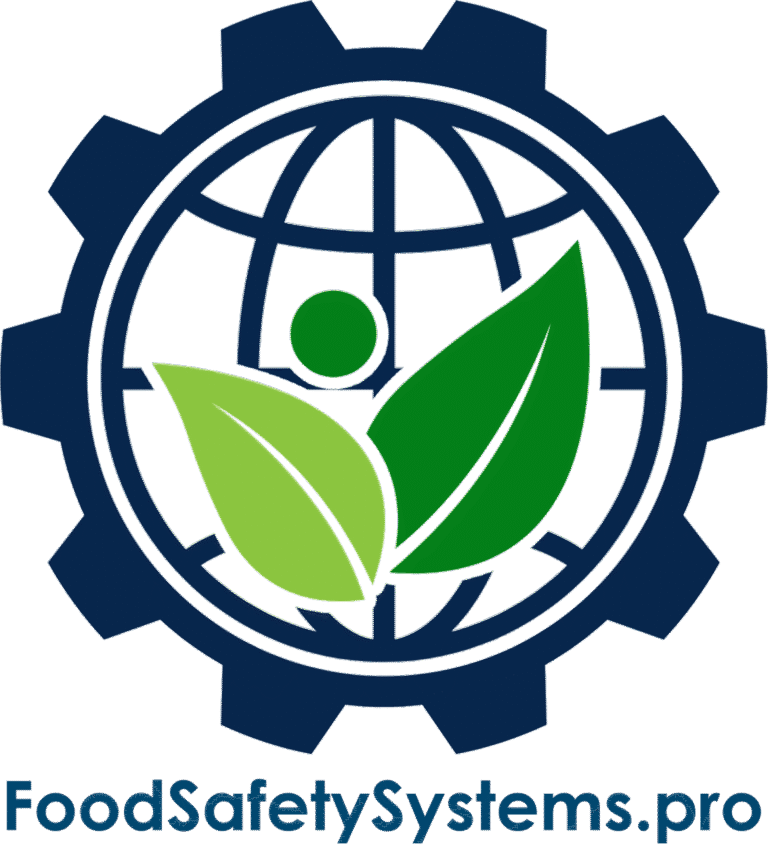Training Needs Assessment
Aligned with SQF Code Edition 9 – System Element 2.5.1
Requirement Overview
SQF Code Edition 9, System Element 2.5.1 states:
“A training needs assessment shall be conducted for all personnel to identify food safety and quality training requirements based on their job functions.”
This requirement ensures that training is role-specific, risk-based, and aligned with food safety and regulatory requirements.
Disclaimer: Food Safety Systems is not affiliated with or endorsed by the Safe Quality Food Institute (SQFI). All references to SQF Code are for educational purposes only. For official resources, visit www.sqfi.com.

Key Compliance Objectives
-
✓ Conduct job-specific training needs assessments
✓ Create a documented training matrix per role or department
✓ Align training with regulatory and customer requirements
✓ Establish a continuous improvement cycle for reassessment
Step-by-Step Implementation Guide
1. Develop a Training Needs Assessment Framework
-
Include:
-
• Job Function Analysis for all departments (QA, production, sanitation, etc.)
• Regulatory references (e.g., FDA FSMA, CFIA, EU legislation)
• Food safety responsibilities (e.g., HACCP, traceability, allergen handling)
Evidence to Maintain:
-
• Documented needs assessment procedure
• Job-function competency maps
List of required skills by job title
- • Job Function Analysis for all departments (QA, production, sanitation, etc.) • Regulatory references (e.g., FDA FSMA, CFIA, EU legislation) • Food safety responsibilities (e.g., HACCP, traceability, allergen handling)
- • Documented needs assessment procedure • Job-function competency maps List of required skills by job title
2. Conduct Individual and Departmental Assessments
-
Assessment Methods:
| Method | Ideal For | Frequency |
|---|---|---|
| Skills Gap Analysis | New hires | During onboarding |
| Observation Checklists | Operators & handlers | Quarterly |
| Written Knowledge Tests | Allergen handlers, QA | Annually |
| Audit Performance Review | QA/supervisors | Post-audit |
-
Evidence to Maintain:
-
• Completed individual assessments
• Departmental gap summaries
• Assessment evaluation forms
- • Completed individual assessments • Departmental gap summaries • Assessment evaluation forms
3. Build a Role-Based Training Matrix
-
The matrix should cover:
-
• Training type (e.g., GMPs, CCPs, sanitation)
• Frequency (initial, annual, bi-annual, as-needed)
• Delivery method (classroom, e-learning, on-the-job)
• Assessment or verification method (test scores, supervisor observation)
Evidence to Maintain:
-
• Approved training matrix document
• Management sign-off on applicability
• Version-controlled updates
- • Training type (e.g., GMPs, CCPs, sanitation) • Frequency (initial, annual, bi-annual, as-needed) • Delivery method (classroom, e-learning, on-the-job) • Assessment or verification method (test scores, supervisor observation)
- • Approved training matrix document • Management sign-off on applicability • Version-controlled updates
4. Implement Ongoing Evaluation and Adjustment
-
Reassessment Triggers:
-
• Annually for all departments
• After incidents (e.g., product withdrawal, customer complaint)
• When roles, equipment, or regulations change
Evidence to Maintain:
-
• Annual training review records
• Documented reasons for matrix updates
• Adjusted competency requirements
- • Annually for all departments • After incidents (e.g., product withdrawal, customer complaint) • When roles, equipment, or regulations change
- • Annual training review records • Documented reasons for matrix updates • Adjusted competency requirements
Common Audit Findings & Recommended Fixes
Non-Conformance
Recommended Action
No documented assessment
Implement a formal needs assessment SOP
Incomplete coverage by role
Re-map functions and training requirements
Outdated training matrix
Review and update quarterly or after major changes
Lack of competency proof
Introduce tests, observation forms, or quizzes
| Non-Conformance | Recommended Action |
|---|---|
| No documented assessment | Implement a formal needs assessment SOP |
| Incomplete coverage by role | Re-map functions and training requirements |
| Outdated training matrix | Review and update quarterly or after major changes |
| Lack of competency proof | Introduce tests, observation forms, or quizzes |
Auditor’s Checklist for SQF System Element 2.5.1
Auditors will typically request:
-
• Your documented assessment methodology
• Individual training records and validation results
• The latest version of the training matrix
• Interviews with staff to confirm training understanding
Implementation Roadmap
Build Your Assessment Framework
-
✓ Identify key roles and responsibilities across departments
✓ Define food safety and regulatory competencies per role
Evaluate Your Team
-
✓ Conduct individual and team-based assessments
✓ Record and analyze skill gaps
Develop and Deploy a Training Matrix
-
✓ Link roles to training types and frequency
✓ Document verification methods and responsible parties
Maintain and Update
-
✓ Schedule annual reviews
✓ Adjust matrix for regulatory changes or new job functions
Why This Matters?
A well-structured training needs assessment:
-
✓ Ensures employees are prepared to meet food safety responsibilities
✓ Strengthens audit readiness and reduces non-conformance risks
✓ Improves response to system changes and incidents
✓ Supports a culture of continuous improvement
Need Support Mapping or Updating Your Training Needs?
Food Safety Systems offers:
-
✓ Training needs assessment SOP templates
✓ Role-based matrix builders
✓ Training tracking tools with competency verification
✓ Regulatory update and compliance checklists
Privacy Policy | Terms of Service | Disclaimer
Powered by Consultare Inc. Group, A Compliance Company







